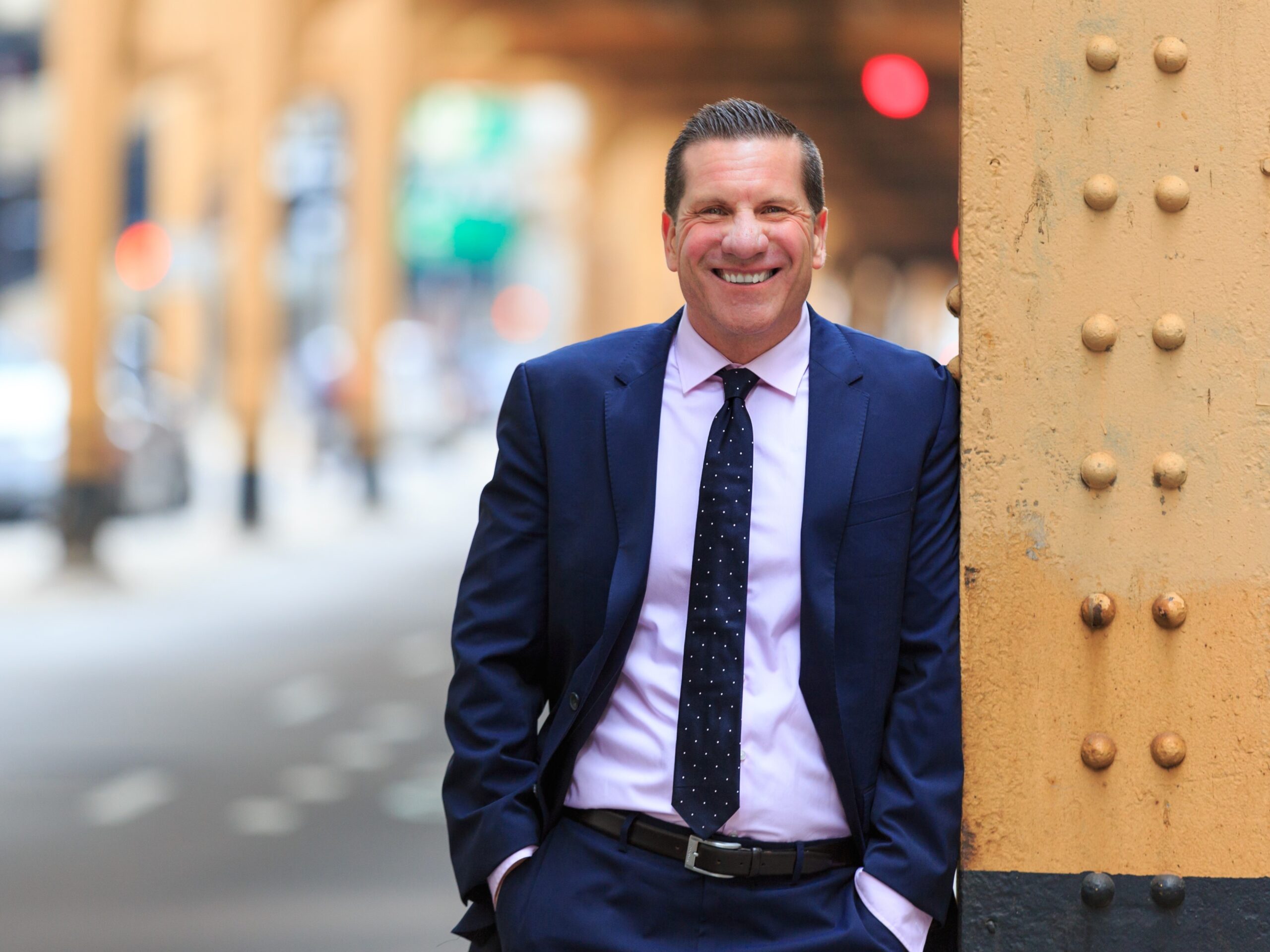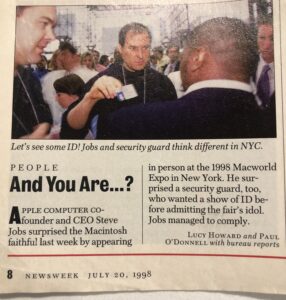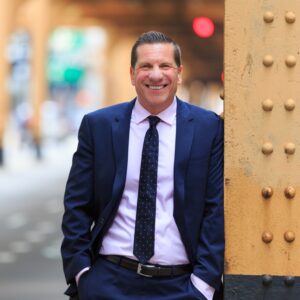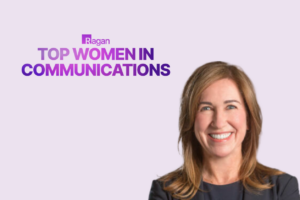Xometry CCO Matthew Hutchison on practicing strategic comms within parameters
Hutchison shares the hard and soft skills that C-suiters deploy to advance the business.

The most effective communications leaders understand how a nuanced, cross-functional understanding of their teams cultivates key relationships, and shapes a strategy that drives business results.
Matthew Hutchison understands this better than most as CCO of Xometry, a technology company in the manufacturing space. Hutchison’s path to seizing the C-seat began with a life-changing experience at Apple that set him on a path to becoming a leader at several media brands, and eventually CCO at Forbes and Dow Jones.
Hutchison caught up with Ragan to share wisdom gleaned from his bosses and colleagues over the years, including the importance of setting parameters to be creative while “thinking in the box”, the hard and soft skills that drive success, and how strategic comms leaders act as a forcing function to grow business.
This conversation has been edited for length and clarity.
Justin Joffe: Let’s begin by talking about your time at Apple, because they have such an interesting management culture and leadership culture. When I worked at the Fifth Avenue flagship years ago, the amount of focus they put on developmental autonomy was unusual. We did Lominger card sorts. There were resources provided to me on behavioral traits. coaching on soft skills and the kinds of things that are normally afforded to someone who’s on an executive coaching plan or a leadership track.
This was fairly early in your career, but did you experience something similar there?
Matthew Hutchison: Absoutely. I started to work closely with Apple when I was on the agency side at Porter Novelli in DC. We represented Macworld Expo, a big b2b tradeshow at the time. The experience put me in touch with Katie Cotton, the legendary head of global corporate communications for Apple, who reported to Steve Jobs and worked closely with Phil Schiller, who was the SVP of marketing.

Hutchison (R) with Steve Jobs at Macworld Expo NY in 1998. From Newsweek’s July 20, 1998 issue.
I got to know both over a two-year period, and when an opening came up at Apple to lead global product PR, Katie asked if I was interested. Apple was not the consumer powerhouse brand that it is now, and yet I saw the potential in the company, and they saw potential in me. That was really humbling, and inspiring at the same time.
From day one, Katie made it very clear, “This is the Apple way.’ She gave me a box, and I could do anything I wanted to within that box. Today, the common thinking is that we should all color outside the lines and think outside the box. That’s true to an extent. In Apple’s case, they provided firm parameters, and then you give free rein within those parameters. I also got to work with legendary journalists like Walt Mossberg of The New York Times and others. It was heady.
JJ: This idea of being creative within the box is fascinating. As you enter your era leading comms for media brands as a VP and senior director, how did you take this idea of giving your directs a box to play in and run with it? Where did you see that apply to your own next steps? And how did that propel you to success as your career advanced?
MH: I think it has helped me in every step, and in every job I’ve had since. The concept of the box is really important because when people talk about the mission or the values of an organization, what they’re really saying is, ‘This is what we stand for. This is how we do things. This is how we do right by our audiences. And this is how we do right for our employees.’
You’ve got to be true to every single stakeholder and shareholder within that box, while also being true to the company and its values and, most importantly, its employees.
In everything I do, I anchor myself in our organization’s mission and our long-term vision for our impact on the world, and that has always given me the freedom to be creative while being true. And it’s something I’ve tried to pass along to everybody with whom I’ve had the pleasure of working.
JJ: Next, you ascend to a mix of senior director and SVP titles in both the media and consumer tech space. And at some point you transition to the Forbes CCO position. What skills and competencies do you ascribe to making that transition?
MH: From a hard skill perspective, I always ask, ‘What value am I bringing to the organization every day?’ At Forbes, for instance, I would ask, how could we show the world all the great work our newsroom was creating? What could we do to demonstrate to advertisers and potential advertisers that Forbes reaches their coveted audiences? And how do we bring all of it together to celebrate the great things our big Forbes family does day in and day out?
You know [current CCO] Laura Brusca, [VP] Christina Magrini and all my colleagues there, I talk to them all the time. They share the same approach. We built a really cool and modern communications strategy together. We did a ton of whiteboard sessions and we were a high-performing team.
JJ: The corporate comms of Forbes during your tenure, and now that Laura is the CCO, are both indicative of the ‘walk-the-talk’ aphorism. The commitments that Forbes has made to inclusion are actionable and non-gestural. Stakeholders are seeing it in the newsroom and seeing it and reporting.
Asking questions that get your team thinking is something all good communicators should do. But it’s certainly what all good leaders do. You’re creating redundancies, but you’re also building business fluency by letting them know ‘I trust you as much as myself with the expectation to think about this from a high level, from a C-suite level.’ And the proof is in the pudding, Laura is CCO now and crushing it.
MH: Laura really is crushing it, which is so fantastic. You mentioned something about the editorial voice. In news and media organizations, there’s often not a lot of crossover between the corporate suite and the editorial side. But I made it my mission to champion all the reporters internally and to champion their work because journalists have hard jobs, especially now.
On the employee front, we were the first major media organization to go remote at the start of the pandemic. I’m wildly proud of that. It came about because we had our ear to the ground with our employees and we knew there was a lot of consternation, understandably so.
 I called [Forbes CEO] Mike [Federle] and I said, ‘You know, we should we should really think about a remote-work business continuity plan.’ And he said, ‘Okay, great. Write a proposal.” And I was like, ‘Okay!” I had never written a business continuity proposal but I went home and spent an entire Saturday banging out a 10-page, single-spaced, bulleted plan that had action items including how it would work. We pulled all the executives together on a Monday and we went remote the next day, becoming the first major media organization to do so.
I called [Forbes CEO] Mike [Federle] and I said, ‘You know, we should we should really think about a remote-work business continuity plan.’ And he said, ‘Okay, great. Write a proposal.” And I was like, ‘Okay!” I had never written a business continuity proposal but I went home and spent an entire Saturday banging out a 10-page, single-spaced, bulleted plan that had action items including how it would work. We pulled all the executives together on a Monday and we went remote the next day, becoming the first major media organization to do so.
That’s an example of comms being the forcing function to bring everybody together, to look ahead, to bring everybody together to make it a win. I think our employees appreciated the care and concern that the business demonstrated and made the transition to remote work seamless.
JJ: You’ve touched on this idea of comms leadership having that cross-departmental, cross-functional omniscience and being the dot connectors. That seems like how comms leaders seize the C-seat. How we wield that influence with business imperatives at the center. But overall, it seems like when we have visibility and use it to connect the pieces we also build trust.
How did you apply that strategic approach after you left Forbes, became the CCO of Dow Jones and then eventually transitioned out of the media industry?
MH: I have such incredible respect for the Dow Jones family of products. Barron’s, Investor’s Business Daily, certainly the Wall Street Journal, Marketplace, et cetera. It was fascinating to come in and be the guardian of those brands, hold the various brands together, and then help advocate for it. This was around this time that my mother started to get ill, and I stepped away to help care for her.
JJ: Family first, always.
MH: Always. As I took some time off to help my mom, Xometry reached out to me to ask if I would consult. They’re a tech company in the manufacturing space. I knew nothing about manufacturing, but I knew a lot about tech. Xometry had just gone public—to this day, of all the companies that went public that year on the NASDAQ, they’re still in the top 10 in terms of performance.
I’m learning and applying new things every single day. I work with the greatest leadership team. We’re all in the weeds together and I try to keep my finger on the pulse of our employees, just as I did in previous roles. And of course, I always go back to that concept of asking how I can provide value to an organization every day.







